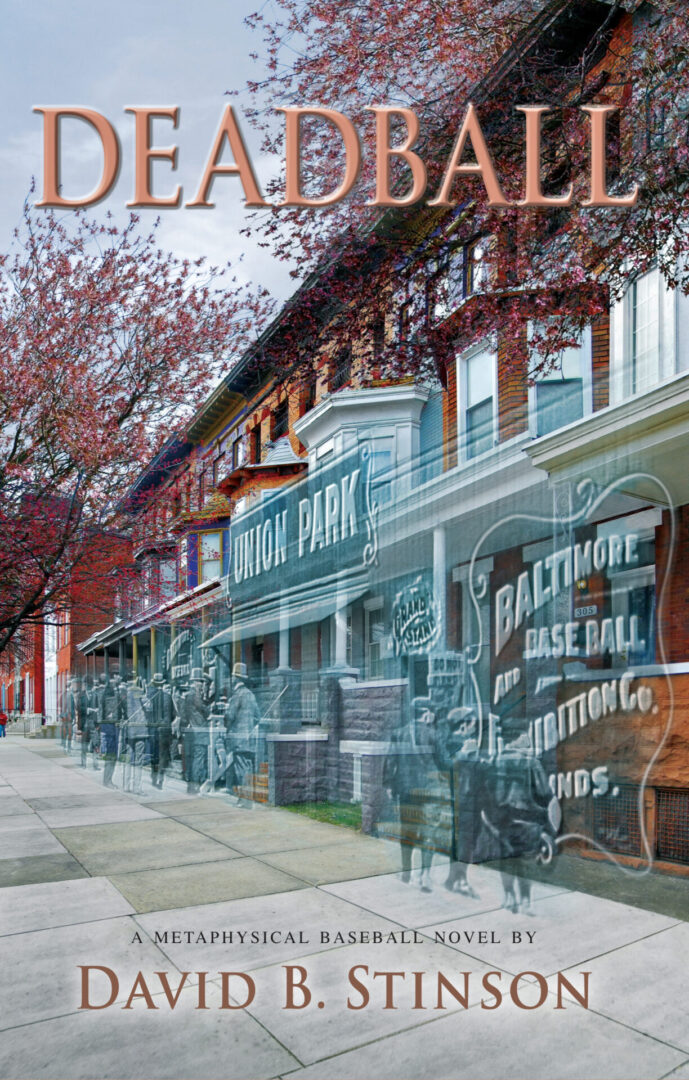Professional baseball was played at the corner of East Ferry and Michigan Avenue in Buffalo, New York, for 72 years beginning in 1889, through the end of the 1960 season.

Originally known as new Olympic Park (old Olympic Park housed Buffalo baseball teams from 1884 to 1888 at the intersection of Richmond Avenue and Summer Street), in 1907 the ballpark was renamed Buffalo Base Ball Park. The original wooden ballpark structure was raised in 1924 and replaced with a concrete and steel structure, and renamed Bison Stadium. In 1935 the ballpark was renamed Offermann Stadium, in honor of Frank J. Offermann, the recently-deceased former owner of the Buffalo Bison.
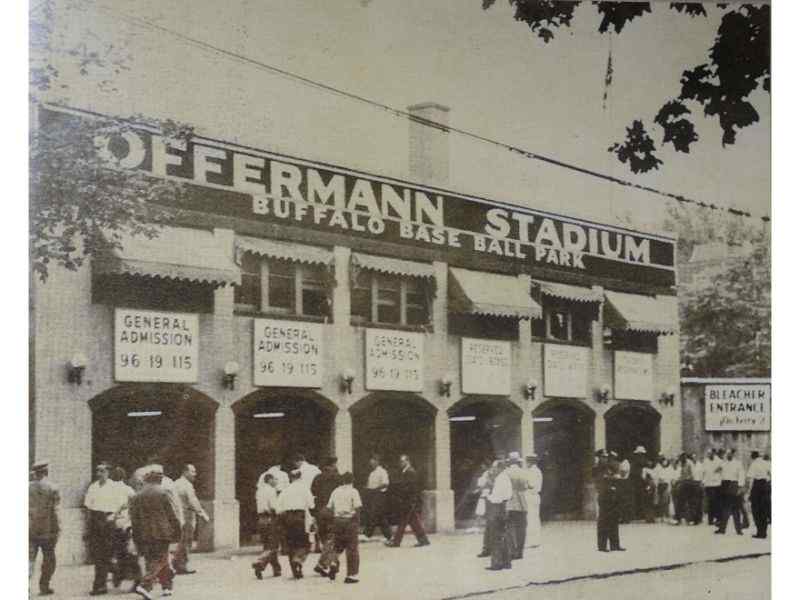
The site’s primary tenant was the International League Buffalo Bison, who played there from 1889 to 1960. According to Philip Lowry’s Green Cathedrals, Major league baseball also was played at this site for one year in 1890 when the Buffalo Bison of the Players League played their home games at new Olympic Park. The Negro National League New York Black Yankees played games at Offermann Park as a neutral site in the 1940s. The Negro American League Indianapolis Clowns played some games at Offermann (neutral site) from 1951 to 1955. Professional football also was played at the site, including National Football League Buffalo franchises (the All-Americans from 1920 to 1923, the Buffalo Bisons from 1924 to 1925, and 1927 to 1929, and the Buffalo Rangers in 1926).
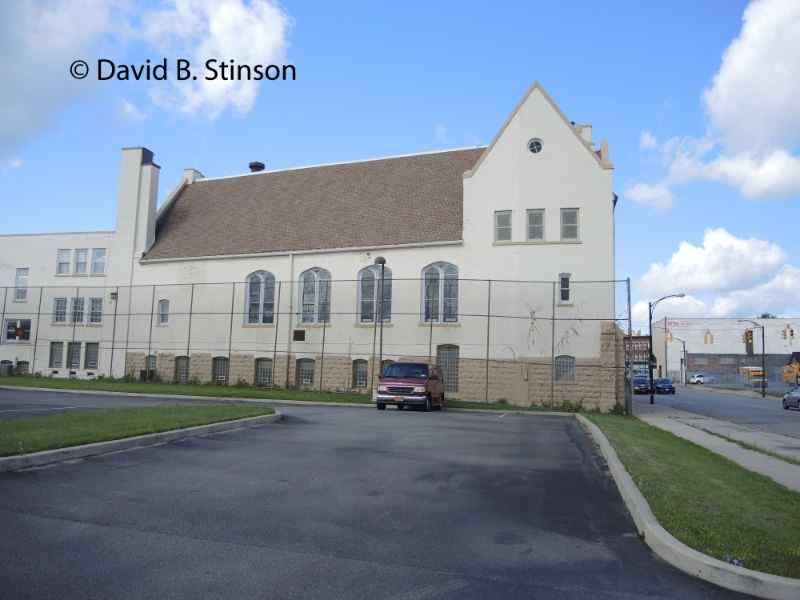
The ballpark was located directly behind what is now the Bethel AME Church (formerly Covenant Presbyterian Church), with home plate near the back of the church at the intersection of East Ferry Street and Michigan Avenue.
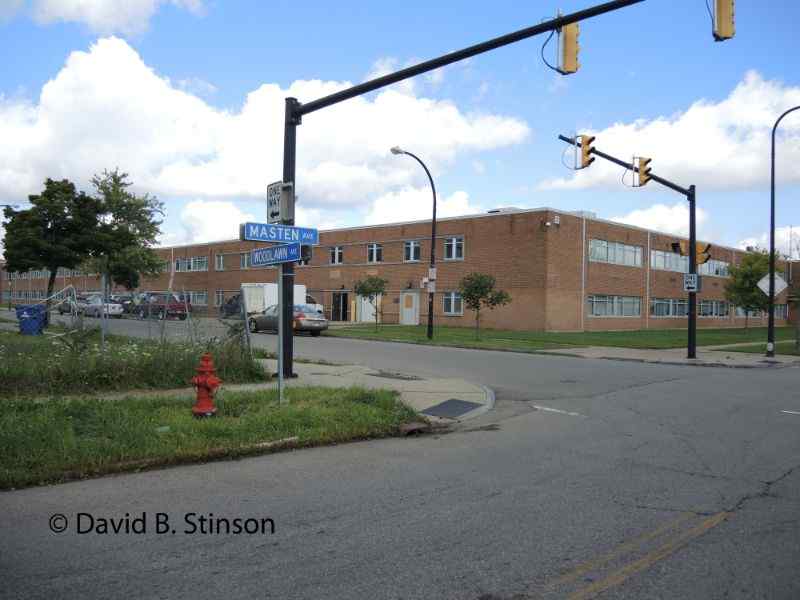
The ballpark faced Southeast towards the intersection of Masten Avenue and Woodlawn Avenue. Center field was located on the northwest corner of that intersection. After the ballpark was demolished in 1962, Woodlawn Junior High School was constructed on the site. To see an aerial photograph of Offermann Stadium from 1956 click here (fixbuffalo.blogspot.com).
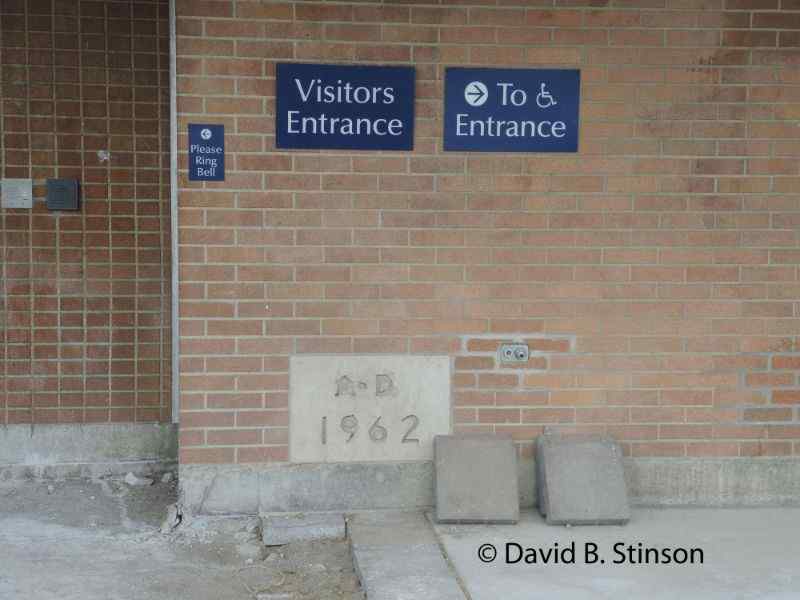
The Buffalo Academy for Visual and Performing Arts now occupies the site.

In 2012, John Boutet of the Buffalo Sports Museum spearheaded a drive to place a historical plaque at the site. The plaque notes that Babe Ruth, Jackie Robinson, and Hank Aaron all played baseball at Offermann Stadium. Babe Ruth played one of his first professional games at what was then Buffalo Base Ball Park, pitching in 1914 for the International League Baltimore Orioles.
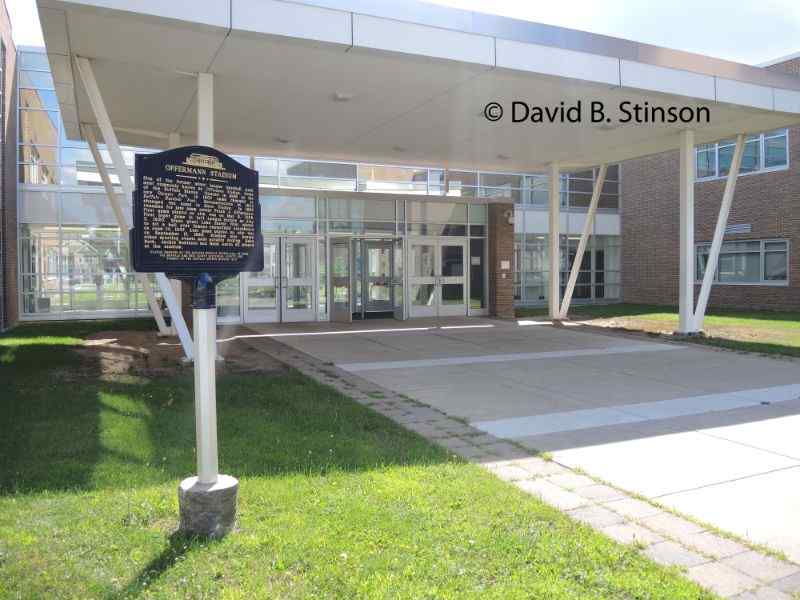
The former site of right field was located at the northeast corner of Woodlawn Avenue and Michigan Avenue.
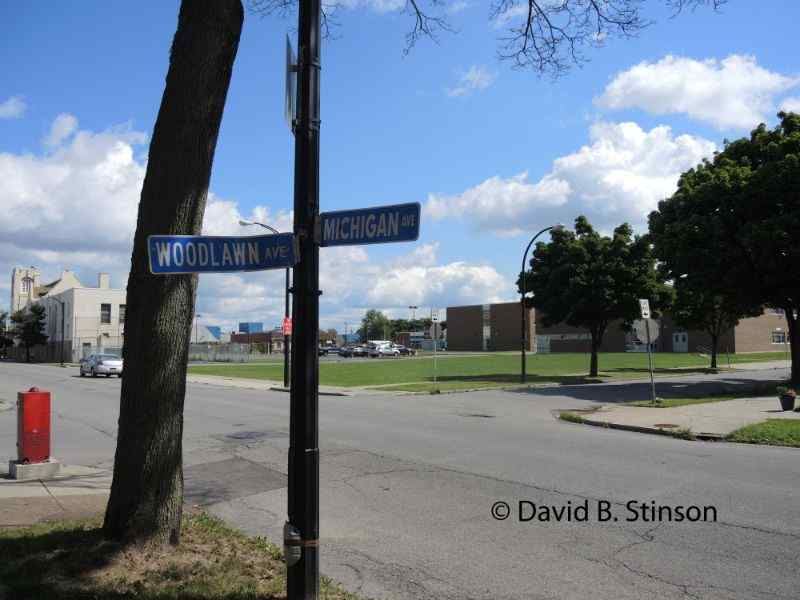
The former site of left field was located at the southwest corner of Masten Avenue and Ferry Street.

The area behind what was once the ballpark’s home plate is now a parking lot for the school.
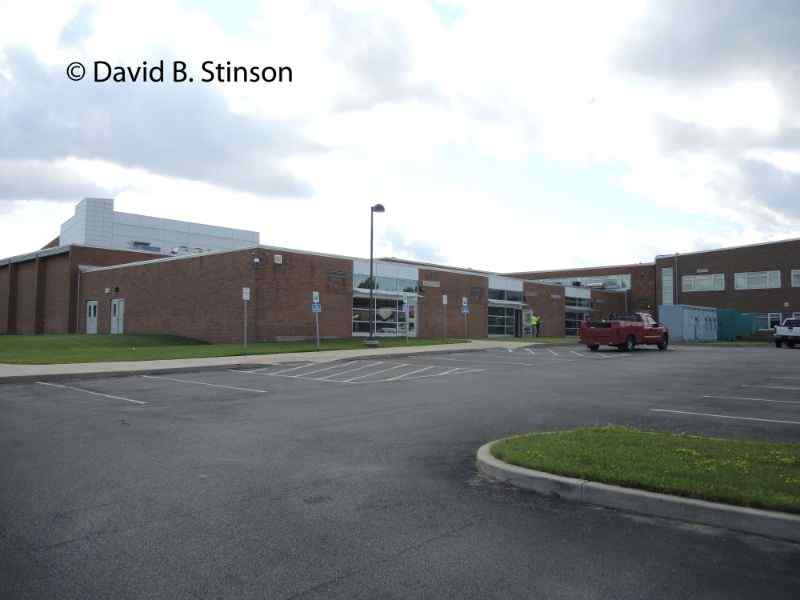
In addition to Bethel AME Church, many other structures surrounding the ballpark date to the time of Buffalo Base Ball Park and Offermann Stadium. The houses in the photograph below sat just beyond the ballpark’s center field fence.
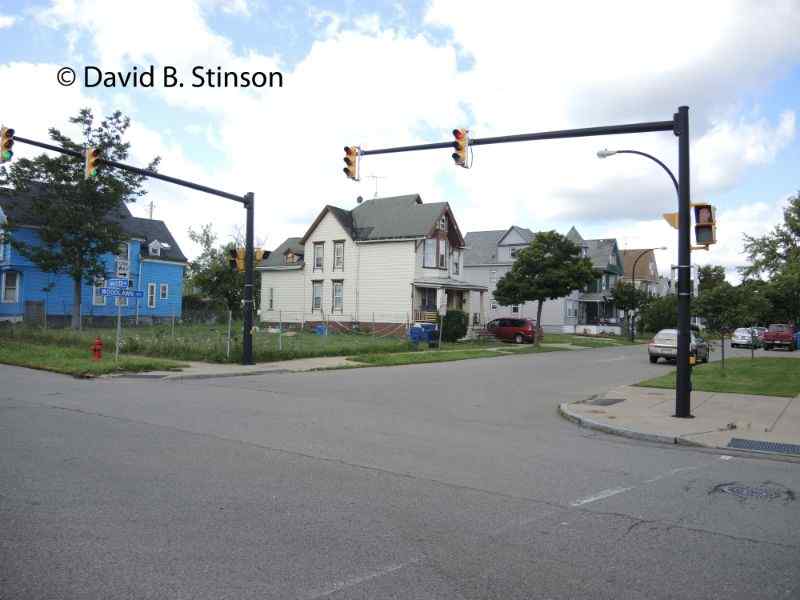
Houses at the intersection Masten Avenue and Ferry Street sat beyond the ballpark’s left field corner.

The Niagara Frontier Transportation Authority Building at 78 East Ferry Street ran parallel to third base.

In 1961, the Buffalo Bison moved ten blocks south from Offermann Stadium to Buffalo’s War Memorial Stadium.
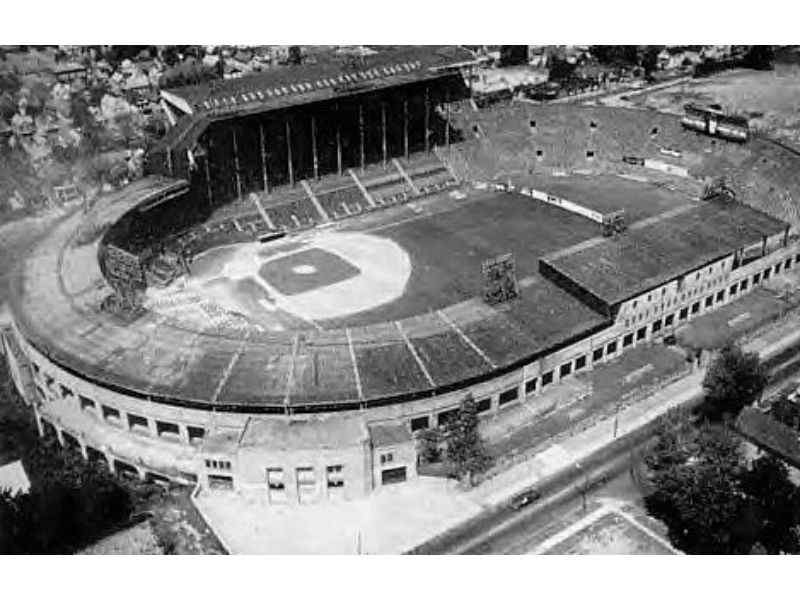
In 1988, the Bison (American Association) moved two miles southwest to Pilot Stadium, later renamed Coca-Cola Field
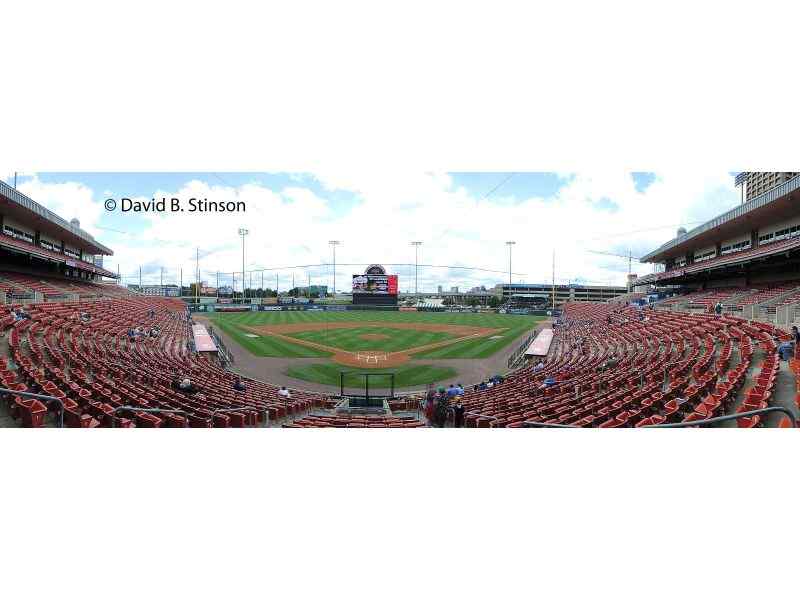
Coca-Cola Field includes a wonderful museum – The Buffalo Sports Museum – featuring memorabilia from and information about Offermann Stadium, as well as Buffalo’s other ballparks. It certainly is worth a visit if you haven’t been there already.

The City of Buffalo boasts a rich baseball history, much of it taking place years ago at the intersection of East Ferry and Michigan Avenue. Although the ballpark is long gone, enough of the neighborhood that existed at the time of Buffalo Base Ball Park and Offermann Stadium remains to give anyone with an interest in the National Pastime with a sense of where the ballpark once stood. The former ballpark site is located just three miles north of Coca-Cola Field and for fans of the game it certainly is worth the trip.
